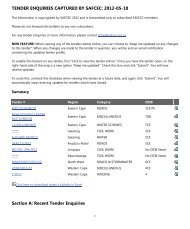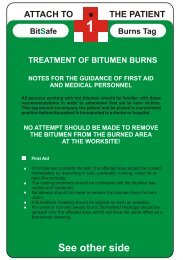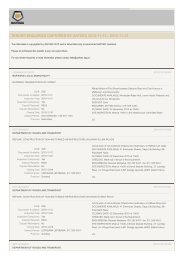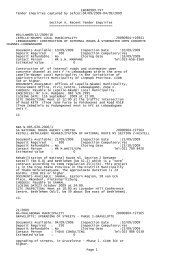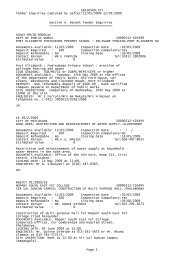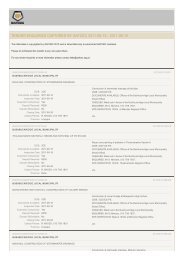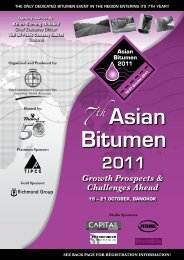DIGEST 2006 - Sabita
DIGEST 2006 - Sabita
DIGEST 2006 - Sabita
Create successful ePaper yourself
Turn your PDF publications into a flip-book with our unique Google optimized e-Paper software.
Revised TRH3 imminent:<br />
Developments in seal design<br />
Gerrie van Zyl<br />
Director<br />
PD Naidoo & Associates (Pty) Ltd<br />
The basic philosophy for<br />
the design of stone seals<br />
in South Africa was<br />
developed by F.M. Hansen in<br />
New Zealand during the mid<br />
1930s. The principle applied<br />
was to partially fill the<br />
available voids around<br />
aggregate particles to retain<br />
the stone on the road under<br />
traffic and expected climatic<br />
conditions.<br />
Road authorities in South Africa<br />
applied and adjusted this<br />
philosophy to suite their particular<br />
conditions to great success, the<br />
majority specifying the application<br />
rate for a given situation, based<br />
mainly on traffic and aggregate<br />
size.<br />
Initial efforts by the former<br />
Committee of State Road<br />
Authorities (CSRA) and the CSIR<br />
to develop a single design<br />
procedure for South African<br />
conditions were not successful,<br />
resulting in guideline documents<br />
incorporating a compendium of<br />
design methods.<br />
During the early 1980s polymer<br />
modified binders were introduced<br />
to South Africa, adding to the<br />
complexities of design.<br />
Although not without difficulties,<br />
the Committee of Local Transport<br />
Officials (COLTO) succeeded, to a<br />
large extent, in unifying the<br />
various design approaches and<br />
also in incorporating design<br />
guidelines for modified binders in<br />
the Technical Recommendations<br />
for Highways (TRH3, Draft 1998).<br />
By accepting that each road<br />
authority’s design provides an<br />
acceptable seal, the “Rational<br />
Design” approach, as developed<br />
by the CSIR and the Department<br />
of Transport, was adjusted to<br />
obtain a range of appropriate<br />
binder application rates.<br />
The adjusted “Rational Design”<br />
determines the minimum volume<br />
of binder to retain aggregate and<br />
the maximum volume to provide<br />
sufficient macro texture for skid<br />
resistance, taking into account the<br />
147



